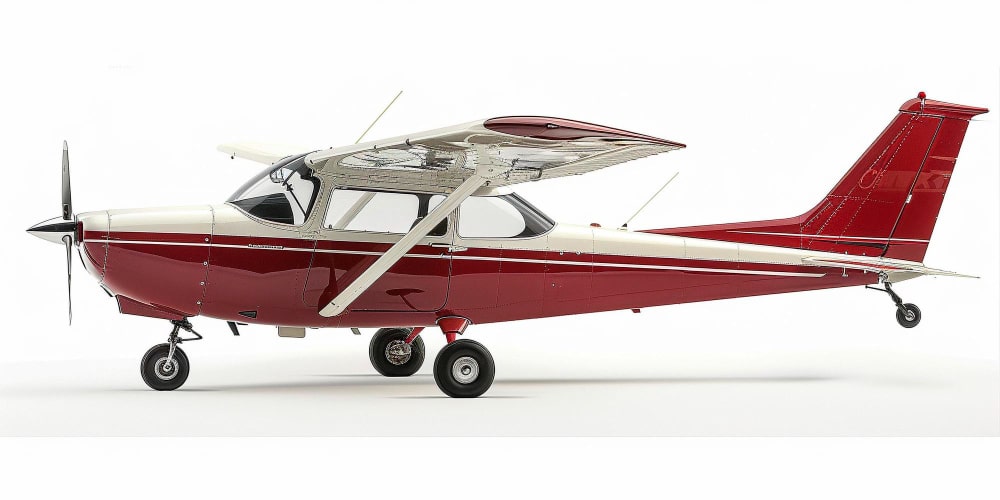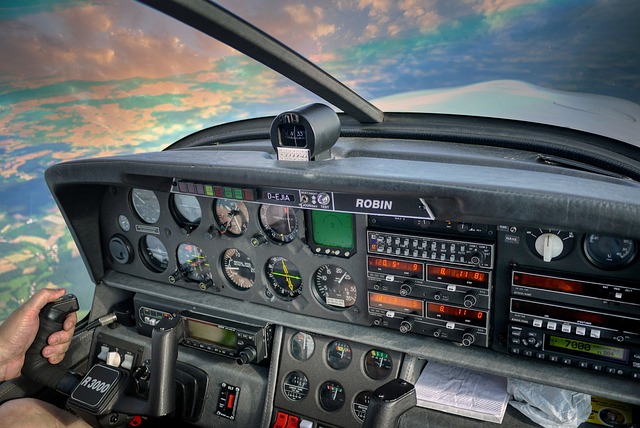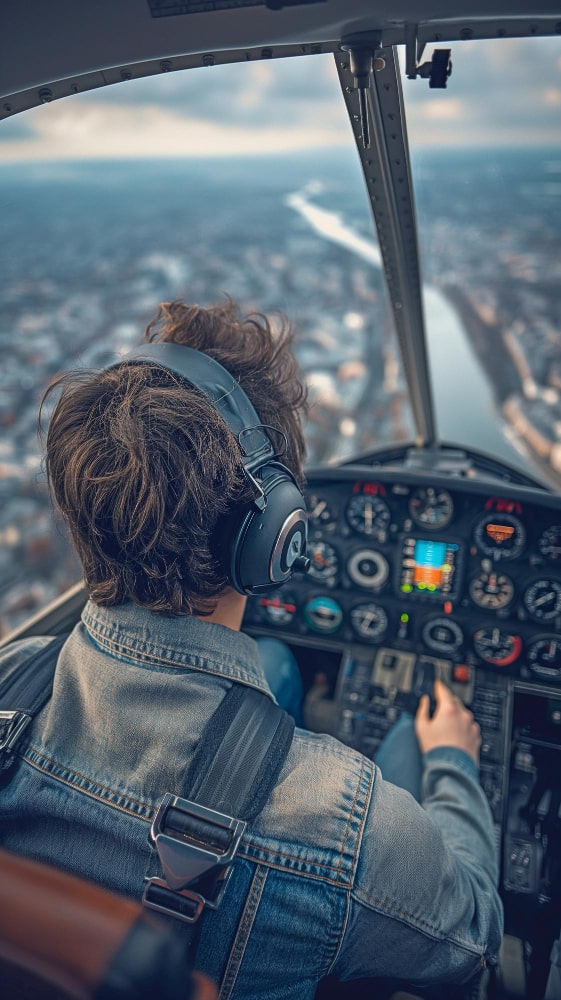Becoming a Light Aircraft Pilot is an exciting goal that demands a combination of technical skills, specialized knowledge, and rigorous preparation. To succeed in this career, it’s crucial to meet specific characteristics and receive comprehensive training covering all necessary aspects. EAS – European Aviation School offers an extensive training program that prepares future pilots to face the challenges of aviation with confidence and competence.
In this article, we will outline the 12 essential keys to becoming a light aircraft pilot and explain how EAS can help you achieve your goals in this career.
Unique Characteristics for Becoming a Light Aircraft Pilot
First and foremost, becoming a light aircraft pilot requires a unique blend of skills, traits, and qualities that ensure safe and efficient performance. Here are the most important characteristics:
1. Technical Skills and Aeronautical Knowledge
To begin with, understanding of aeronautics is crucial. Pilots must have a deep understanding of how aircraft operate and how they behave under different flight conditions. This includes knowledge of basic aerodynamics principles and aircraft systems operation.
- Moreover, instrument proficiency is essential. The ability to interpret and use flight instruments correctly ensures that pilots can navigate, communicate, and control the aircraft safely.
2. Ability to Make Quick Decisions as a Light Aircraft Pilot
- Equally important is the decision-making under pressure. Pilots need to make quick and effective decisions in emergency situations or adverse conditions. Rapidly assessing the situation and choosing the best course of action is vital for flight safety.
3. Excellent Communication Skills
- Furthermore, clear and precise communication is fundamental. Effective communication with air traffic control and other crew members ensures that instructions and information are conveyed accurately.
4. Problem-Solving Skills
- In addition, problem resolution capabilities are necessary. Pilots must be able to identify and solve technical or operational problems that may arise during flight. Handling equipment failures or navigation issues is crucial for a safe flight.
5. Strong Focus on Safety as a Light Aircraft Pilot
- Safety awareness is paramount. Safety is the top priority in aviation, and pilots must rigorously follow safety procedures and be vigilant for potential risks to prevent accidents.

6. Excellent Handling and Coordination Skills
- Transitioning to hand-eye coordination and manual dexterity, operating controls as a light aircraft pilot requires precise coordination between physical movements and visual perception. Handling the aircraft with precision is crucial for safe flying.
7. Ability to Work Under Stress
- Additionally, stress resilience is important. Pilots must maintain calm and efficiency under stressful conditions. Managing stress and pressure is fundamental for optimal performance in critical situations as a light aircraft pilot.
8. Attention to Detail as a Light Aircraft Pilot
- Meticulousness in operations cannot be overlooked. Attention to detail is vital for the safe operation of the aircraft. Pilots need to be meticulous in flight planning, conducting pre-flight checks, and adhering to operational procedures. Spotting errors or inconsistencies can prevent major issues during the flight.
9. Adaptability
Adaptability is another crucial trait. The ability to adjust to varying flight conditions, weather changes, and other variables is essential. Pilots must be flexible and quickly adapt to new circumstances or changes in the flight plan, ensuring safety and efficiency.
10. Teamwork and Leadership
- Teamwork skills are important. Although light aircraft pilots often fly solo, they must effectively collaborate with others, including maintenance staff, air traffic controllers, and other aviation professionals. The ability to work in a team and coordinate with different stakeholders is key to ensuring safe and efficient operations.
- Leadership is also critical. The ability to lead and make effective decisions, especially in situations requiring coordination and direction, is important. A pilot must be able to take charge in decision-making and manage any situation that may arise during the flight.
11. Proactive Attitude as a Light Aircraft Pilot
- Initiative and proactivity are vital. Pilots must be proactive in preparing and maintaining the aircraft, as well as planning flights to anticipate and mitigate potential issues. A proactive attitude includes the ability to foresee problems before they occur and take preventive measures to avoid them.
12. Passion and Commitment
- Passion for aviation is an essential trait. This passion drives commitment to ongoing training, skill enhancement, and dedication to safety and well-being in flight.
- Commitment to excellence is equally important. The willingness to invest time and effort in training and continuous improvement is crucial. Pilots must be committed to professional development and ongoing improvement to maintain high standards in their performance.

Training at EAS – European Aviation School for Becoming a Light Aircraft Pilot
When it comes to training, EAS – European Aviation School stands out for its comprehensive approach. The school offers an extensive program that covers both theoretical and practical aspects of flying, providing students with the tools needed to excel in their careers.
Theoretical Training Program
To start, the theoretical training program at EAS is designed to provide a deep understanding of aviation fundamentals. Courses include:
- Aerodynamics fundamentals: This detailed study of aerodynamic forces and their effects on flight helps students understand flight dynamics and apply aerodynamic principles in practical situations.
- Regulations and procedures: Training in aviation regulations and operational procedures ensures students meet international standards. This includes understanding laws and regulations affecting the operation of light aircraft.
- Advanced meteorology: Analyzing complex meteorological phenomena and techniques for flight planning in various weather conditions helps students interpret meteorological data and plan flights effectively.
- Navigation techniques: Advanced use of navigation tools and systems, including instrument navigation and modern technologies, teaches students to plan and execute flights using advanced navigation technologies.
Practical Training for Becoming a Light Aircraft Pilot
Moving on to practical training, EAS provides essential hands-on experience. Students have access to:
- Advanced flight simulators: These simulators offer a realistic flying experience and allow students to practice procedures and maneuvers in a controlled environment, replicating various flight conditions and emergency scenarios.
- Real flight sessions: Students have the opportunity to fly real aircraft under the supervision of experienced instructors. These sessions enable students to apply their knowledge in a real environment and develop essential practical skills.
- Personalized training: Instructors provide specific and personalized feedback to help students improve their skills and overcome areas of weakness. This individualized guidance is key to developing competencies and preparing for certification tests.
Continuous Assessment and Feedback
Furthermore, continuous assessment is an integral part of the training program at EAS. Students are regularly evaluated through theoretical exams and practical skills tests.
Constant feedback from instructors helps students identify areas for improvement and refine their skills. This feedback is essential to ensure that students are well-prepared to face the challenges of aviation.
Certification Preparation
Lastly, EAS prepares students to obtain the necessary certifications for becoming a light aircraft pilot. This includes:
 Theoretical exams: Assessments to ensure that students understand fundamental aviation concepts and are prepared to operate the aircraft safely.
Theoretical exams: Assessments to ensure that students understand fundamental aviation concepts and are prepared to operate the aircraft safely.- Practical skills tests: Evaluations of flight skills and aircraft handling in simulated and real situations.
- Licenses and certifications: Preparation for obtaining required licenses, such as the Light Aircraft Pilot License (LAPL) or Private Pilot License (PPL), depending on the training program.
Professional Opportunities as a Light Aircraft Pilot
Becoming a light aircraft pilot opens a variety of professional opportunities across different sectors. Pilots can explore options such as:
- General aviation: Operating aircraft for recreational activities, private transport, or specific missions like aerial photography and surveillance.
- Emergency services: Participating in medical personnel transport or evacuations in remote areas.
- Agriculture and precision farming: Using aircraft for agricultural product application and crop management.
- Flight instruction: Becoming a flight instructor and training new pilots.
Professional Growth as a Light Aircraft Pilot
Ongoing professional development is crucial for advancing in a pilot career. Pilots can pursue additional certifications, specializations, and continuing education to take on more advanced roles in the industry.
EAS provides support and resources to help students continue growing and developing in their careers.
EAS – European Aviation School offers comprehensive and rigorous training to prepare students for becoming a light aircraft pilot. The combination of theoretical training, practical experience, and development of specific personal traits ensures that future pilots are well-equipped to face the challenges of aviation and succeed in their careers.
The school is committed to providing high-quality education and supporting students on their path to a successful aviation career.
